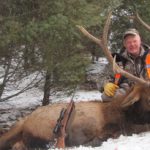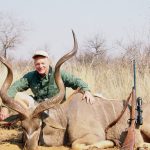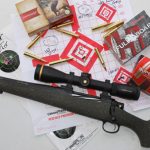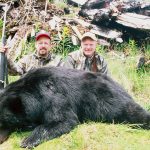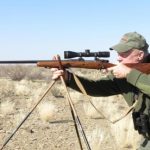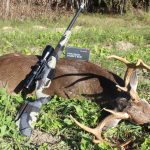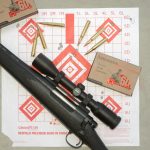Are they really a good idea?
When we think of classic African hunting rifles we’re usually thinking of big-bore double rifles or bolt-actions, or perhaps a combination of the two. The other action types, not so much. Despite their popularity (and versatility and utility) in the U.S., semi-automatic sporting rifles are specifically illegal in many African jurisdictions. The slide-action, though still common with shotguns, isn’t as common in rifles as it once was, and is rarely seen elsewhere. In fact, the only slide-action rifle I’ve ever seen in Africa was a battered Remington .30-06 carried by a hunting partner clear back in 1981.
Lever-actions also aren’t as popular as they once were, but millions of Americans have a Marlin, Savage, or Winchester lever-action. I’ve taken lever-actions on several safaris. They performed just fine, and you’d be surprised how many hunting households in Africa also have a lever-action squirreled away. Even so, we don’t think of the all-American lever-action as a classic safari rifle.
The single-shot also doesn’t come immediately to mind for African hunting, but at one time it was a safari classic. Frederick Selous came to prefer single-shot falling blocks on the pattern of the Scottish Farquharson action. Photos of Selous in the field often showed him with one of these elegant rifles.
A decade ago, I used a Holland & Holland single-shot from Bill Jones’s collection. It wasn’t exactly a Farquharson action, but it was a falling block, chambered to 6.5x53R and made for Selous in 1898.
Although never exclusive in their use, I’m a single-shot fan. I’ve always wanted an original “Farkie,” but I’ve never owned one; they’re scarce and expensive. Instead, most of my single-shots have been Ruger No. 1s. Bill Ruger admired the Farquharson, and the influence is obvious. Although production has never been large, chamberings have been myriad, with many variations. The No. 1s I like best are the Light and Medium Sporters and the Tropicals. These all carry rear sights on quarter rib (which doubles as a scope base) and barrel band front sights. They also have barrel-mounted forward sling swivel studs. Mind you, I like all No. 1s, but the Sporter and Tropical models are most reminiscent of the classic British single-shots.
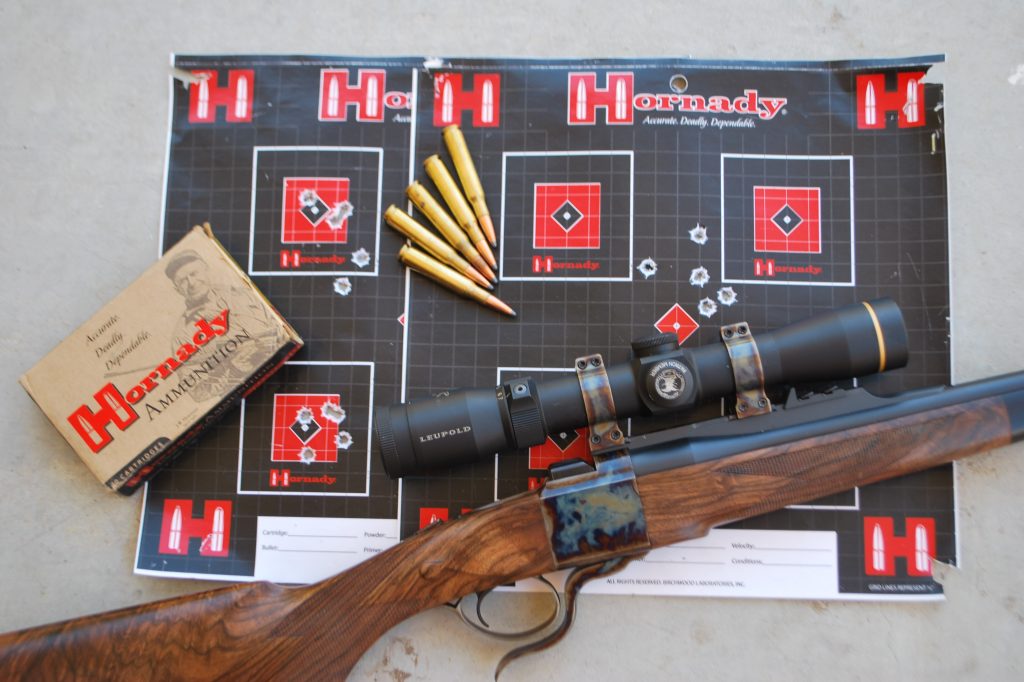
In my use of single-shots I have not remained true to the Ruger. I admire the trim little Dakota Model 10, also a falling block, but sleeker and even more elegant. I’ve used Dakota single-shots on several safaris, and have a gorgeous M10 in .275 Rigby. I’ve also used the Thompson/Center break-open in Africa. The T/C isn’t as pretty, but it’s inexpensive and the switch-barrel capability is handy. I took a T/C with .22 Hornet and .270 Winchester barrels on a couple of safaris, a great combination.
So, where might the single-shot fit in on the modern safari? Technically, just about anywhere . . . with reservations! Most single-shots have a two-piece stock, and the fore-end is often attached to the barrel by a screw. These factors aren’t ideal for utmost accuracy. I love my single-shots, but I haven’t used them for much mountain hunting, and I wouldn’t choose one for extreme-range shooting. That said, single-shots are plenty accurate for most hunting, certainly in Africa, and some are tack-drivers.
No matter where you are, the first shot may not be enough and another shot is needed. It will be slower with a single-shot, but I can’t recall problems because I was using a single-shot. Knowing you can rely on just the one shot makes you careful, and that’s good.
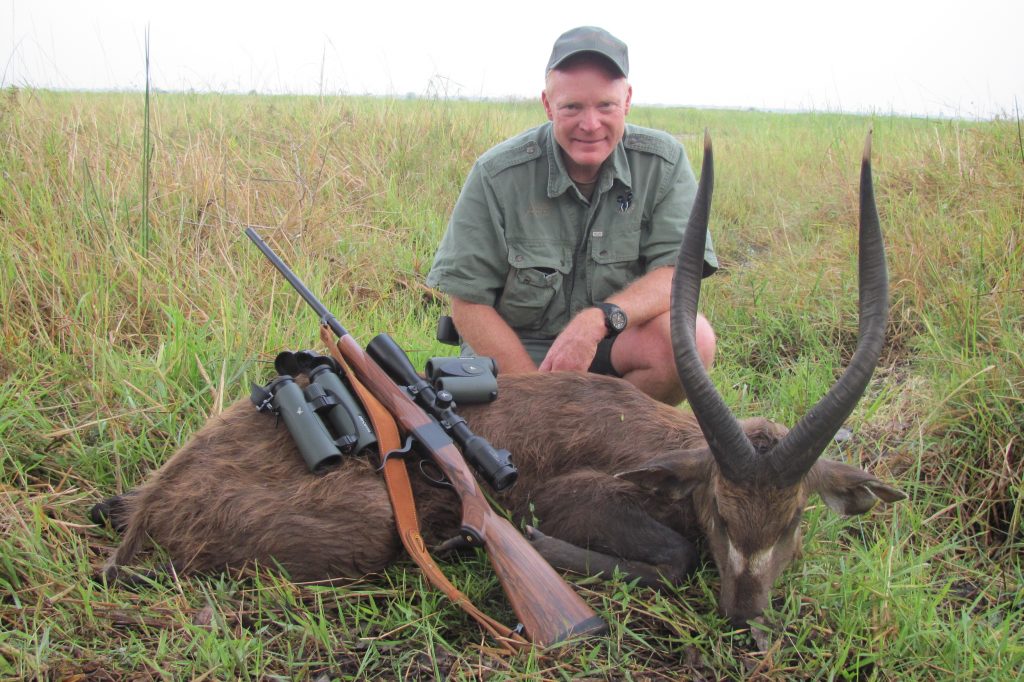
In western Tanzania, hunting with Jaco Oosthuizen, I used a Dakota M10 in 7mm Remington Magnum for a variety of antelopes: topi, waterbuck, bohor reedbuck, my longest shot on a sitatunga, and a really lucky long shot on a side-striped jackal. Ten years ago, I did a “single-shot safari” with two No. 1s: An exceptionally accurate .300 H&H Medium Sporter, and a Tropical in .450/.400 3-inch. We started in Mozambique with Mark Haldane, then went on to northwest Zambia with Pete Fisher. Naturally, the .300 H&H did most of the work. At last light, I took a fine nyala, a tricky shot off sticks. We hadn’t quite gotten to the animal when Haldane stopped and put up the sticks again. “That’s a huge red duiker; you must shoot him.” I did, for a most unusual double.
With non-dangerous game, there are two limitations to using a single-shot. First, a second shot, if needed, will be slower. Second: Unless action is imminent, I never carry a round in the chamber. So, carrying a single-shot requires a mind-set: First cartridge ready, second cartridge handy. When the time comes, you must be able to load quickly! I’ve used Ruger No. 1s for fifty years, so these are not dramatic constraints, but it is a matter of training. You must know where that all-important first cartridge is, and how you’re going to load it on a moment’s notice.
On that Mozambique/Zambia safari, the .450/.400 single-shot was used exactly once, for a Zambezi Delta buffalo, and only one shot was fired. So, let’s talk about the single-shot for dangerous game. Several single-shots are available in appropriate chamberings, so that’s not a limitation. The real question is: How limiting is that “one-shot-only” capability?
Extensive experience with lions is hard to come by today. I have some, but I have never hunted a lion with a single-shot, and I’d just as soon not. As a visiting hunter, I’m not hunting dangerous game alone. However, I prefer cleaning up my own messes. If things get nasty, I have no issues with my PH chiming in, but I’d just as soon he didn’t. In my experience, “pure” one-shot kills on lions are rare; it’s just not the nature of the beast. Also, since you rarely know what the first shot accomplished until it’s all over, is it wise for your PH to dither while you fumble the reload? I think not!
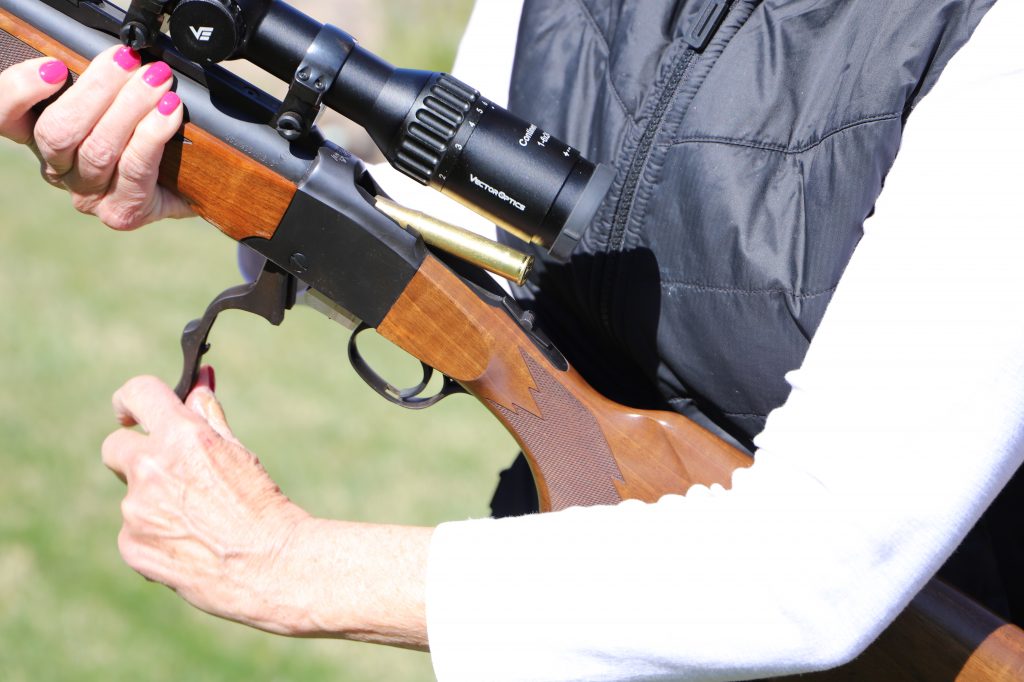
I have much more experience with elephants, but I have also never hunted elephant with a single-shot. My thinking is much the same; things happen fast after the first shot. If it isn’t perfect, or if your experienced PH thinks it isn’t perfect, something must be done–fast! I have no ego-driven issue with backup, and I have flubbed the first shot on elephants. With a double or bolt-action, I’ve always been able to correct my error. With a single-shot, nobody is fast enough.
The leopard is a different deal. Most times, there’s only one shot. I’ve hunted leopards with single-shots and would again, especially over bait. You sit there as long as it takes, rifle loaded and ready. The chance for a second shot is very unlikely; you simply must make the first shot count. A single-shot actually helps, because you know you have just one shot.
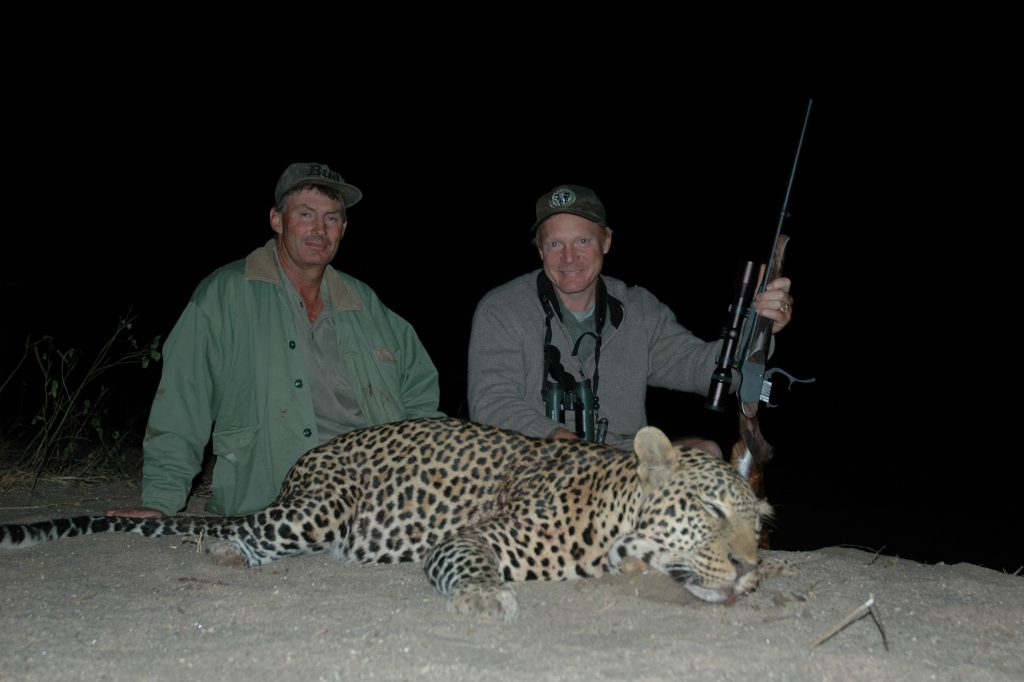
Buffalo, the most plentiful and available dangerous game, are worthy of discussion. The first buffalo I took with a single-shot was in 1995, using a Dakota M10 in .375 Dakota. Hunting in Zambia with Russ Broom, we’d tracked him to his bed. When he got up, I think my shot was good, but the buffalo was still up, and Russ backed me up. Did he need to? We will never know, because I was still reloading and he had a split-second judgment call to make. Russ is not a trigger-happy PH. I agreed with his call to shoot rather than to wait and see what happened next. That is the dilemma to hunting buffalo with a single-shot: You want to do it all by yourself, but second shots matter, and nobody is fast enough on the reload to reliably get a second shot off every time.
In the last quarter-century I’ve taken numerous buffalo with single-shot rifles. Some have been pure one-shot kills. However, when that happens it usually isn’t a matter of first-shot perfection, but simply that the buffalo is down or masked before a second shot can be fired. Sometimes there’s time to reload. In Mozambique in 2018, using a Ruger No. 1 in .450 3¼-inch, I found myself shooting and reloading on the run; the bull was still up, and I had no idea what that first shot had done.
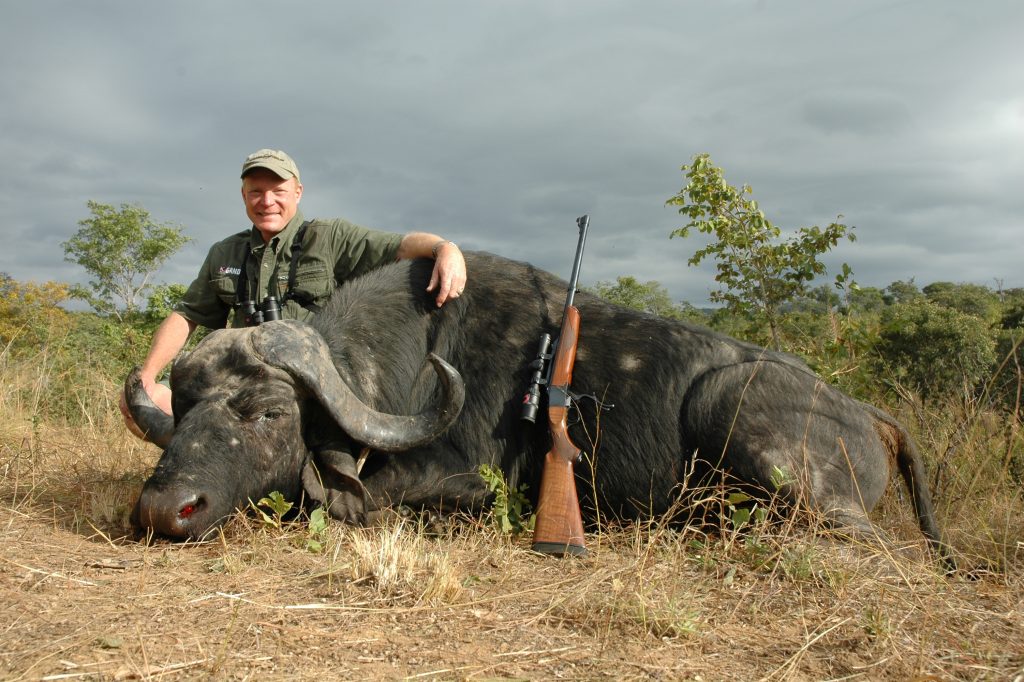
There is a point to be made regarding the Ruger No. 1 as opposed to most other single-shots. Older British rifles were invariably extractor guns. To this day, most single-shot rifles extract but do not eject. This means that the fired case must be manually plucked from the chamber. With his No. 1, Bill Ruger engineered a powerful and reliable ejector!
Does this mean the Ruger No. 1 is the only single-shot suitable for dangerous game? Hardly; Fred Selous would dispute that vehemently. However, because it both extracts and ejects, the Ruger No. 1 is probably the fastest single-shot to reload, and reloading time is critical on dangerous game. Mostly, it comes down to practice: Training and familiarity. Americans are especially bad about “admiring the shot,” firing one shot and waiting to see what happens next. Unfortunately, the single-shot promotes this mind-set, and it’s dangerous. Place that first shot with care, but practice fast reloading!


